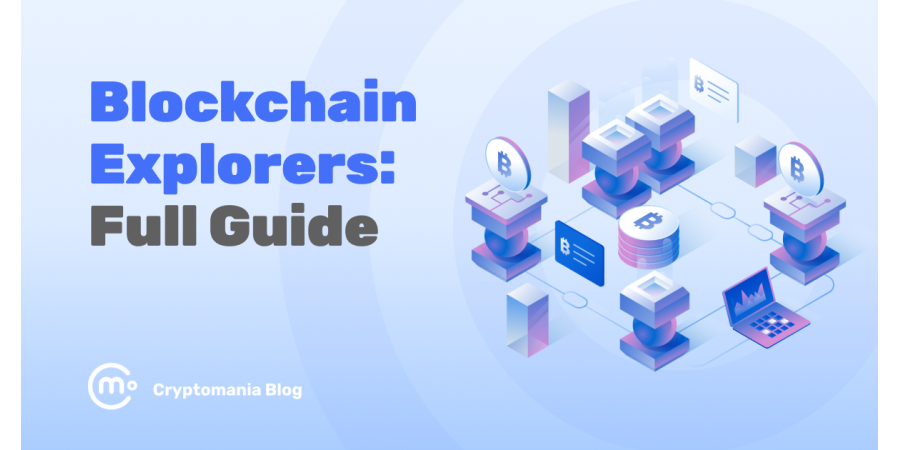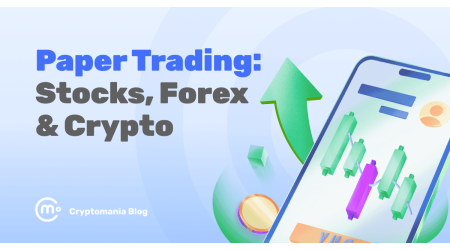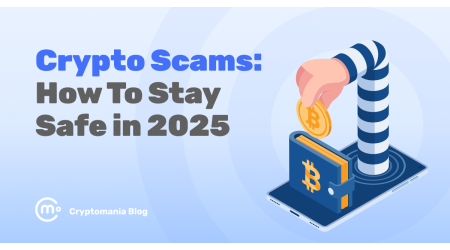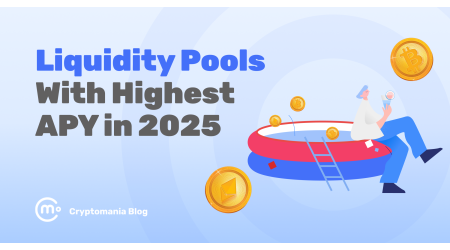How to Track Any Crypto Transaction: A 2025 Guide to Blockchain Explorers
Vuk Martinovic


Every crypto transaction leaves a public trace. It doesn’t matter whether you’re sending ETH, minting an NFT, or swapping tokens. Your activity is recorded on the blockchain, and blockchain explorers are how you can see it.
A blockchain explorer works like a search engine for crypto. It’s one of the simplest ways to confirm if a transfer went through, track wallet activity, or research tokens before buying.
In this guide, I’ll go over the best blockchain explorers in 2025, from Etherscan for Ethereum to Solscan for Solana. I’ll show you how to track any transaction on any major blockchain. Each one gives you a clear window into the network it supports, and helps you understand exactly where your crypto moves and why.
Let’s get started!
What are blockchain explorers, and how do they work?
A blockchain explorer lets you look “under the hood” of any blockchain. Think of it as a window into the database that keeps crypto running.
Every transfer, smart contract, or token movement leaves a record. And explorers make those records easy to search and understand. You type in a wallet address, transaction ID, or token name, and it shows you everything happening on-chain in real time.
When you visit a site like Etherscan or Solscan, you can search in several ways:
- By transaction ID (hash): Paste the transaction hash to see when it happened, who sent it, who received it, how much was transferred, and whether it was successful.
- By wallet address: Enter an address to view its full transaction history, token balances, and even NFTs.
- By block number: Check what transactions were included in a specific block and how many confirmations it has.
Behind the scenes, these explorers connect directly to blockchain nodes. They pull verified data, index it, and display it in a user-friendly format. That’s how you can see what’s happening across the entire network, often within seconds of a transaction being confirmed.
Modern explorers also do more than just simple tracking. Many now include:
- Smart contract details – View verified contract code, functions, and recent interactions.
- Token analytics – See how many holders a token has or track large wallet movements.
- Gas or fee trackers – Monitor network congestion and transaction costs.
- Address labels and warnings – Identify known exchanges, DeFi protocols, or scam addresses.
Bottom line is this: blockchain explorers make transparent what would otherwise be invisible. They turn the raw, technical data of a blockchain into something anyone can read.
Tracking transactions on Ethereum (Etherscan)
Ethereum is the most widely used blockchain, and its main explorer is Etherscan. It’s simple, reliable, and full of features that help you understand every part of a transaction.

When you send or receive ETH, or interact with a smart contract, the network creates a transaction hash. It’s a long string of letters and numbers. Copy that hash and paste it into the Etherscan search bar. You’ll instantly see:
- Status: Whether the transaction succeeded, failed, or is still pending.
- Block number: The block it was included in, and how many confirmations it has.
- From/To addresses: Who sent and who received the funds.
- Value: The exact amount of ETH or token transferred.
- Gas used: How much you paid in network fees.
Each detail is clickable. You can click the sender’s or receiver’s address to view their wallet history or check other tokens they hold. If the transaction involved a token transfer, you’ll see the token name, contract address, and amount in a separate section labeled “Tokens Transferred.”
Etherscan also verifies smart contracts. If a project publishes its contract source code, you can read it directly on the site and see whether it matches what’s running on-chain. That’s useful for checking transparency before interacting with a new DeFi protocol or NFT project.
For developers and advanced users, Etherscan includes APIs, analytics charts, and even a “Write Contract” tab that lets you interact with deployed smart contracts directly from the interface.
But for everyday users, the main value is simple: you can confirm that your transaction went through, how much gas you spent, and where your crypto actually went.
Tracking transactions on other EVM chains
Many of today’s most popular blockchains are EVM-compatible. It means they work similarly to Ethereum and use the same basic structure for transactions and smart contracts.
Because of that, their explorers look and function almost exactly like Etherscan.
If you already know how to use Etherscan, these sites will look and feel very familiar.
BscScan (BNB Chain)
The main explorer for Binance’s BNB Smart Chain. It shows BEP-20 token transfers, gas fees, and contract interactions just like Etherscan. It’s also great for checking which DeFi protocols or meme coins are trending on BNB Chain.
PolygonScan (Polygon)
Tracks MATIC transactions and ERC-20 tokens on Polygon’s network. You can check bridge deposits, contract addresses, and NFT activity.
Arbiscan (Arbitrum)
Used for the Arbitrum Layer-2 network. It shows ETH and token transfers, plus deposits and withdrawals between Ethereum and Arbitrum.
SnowTrace (Avalanche)
Avalanche’s main explorer, covering the C-Chain and custom subnets. You can verify contracts, view validator info, and trace AVAX or token transfers.
BaseScan (Base)
Coinbase’s Layer-2 network uses this Etherscan-style explorer to show ETH and token activity at low gas fees.
All of these explorers share more-or-less the same layout. There’s a search bar, block overview, transaction list, and token tracker. You can use them to check whether a transaction succeeded, how much gas was spent, and which contracts were called.
Each site also verifies smart contracts, provides gas trackers, and labels major wallets (like exchanges or bridges). So, even though they technically run on different chains, if you use one, you’ll know how to use the other ones as well.
Tracking transactions on Solana (Solscan)
Solana works differently from Ethereum. It processes thousands of transactions per second, and its structure is built around accounts and programs instead of wallets and contracts. But the idea is the same. Every transaction is public, and Solscan lets you view it clearly.

When you open Solscan, you’ll see a simple search bar at the top. You can paste a transaction signature (Solana’s version of a transaction ID), a wallet address, or even a token name. The results show:
- Status: Confirmed or failed.
- Block slot: The exact position of the transaction in Solana’s ledger.
- Accounts involved: Who sent, who received, and which programs (smart contracts) were used.
- SOL or token transfers: Details of how much moved and what type of asset it was.
Because Solana’s network is fast and complex, Solscan helps decode the details. You can see the instructions executed by the transaction, fees paid, and the exact time it was finalized.
Solscan also goes beyond transfers. It includes sections for NFTs, staking, and DeFi activity. You can explore which collections are trending, check validator performance, or look up liquidity pool movements.
In 2023, the Etherscan team acquired Solscan and upgraded its reliability and interface. That means Solscan now feels as polished as the EVM explorers, while staying true to Solana’s unique system.
If you trade, mint NFTs, or stake on Solana, Solscan is the easiest way to verify what actually happened on-chain.
Tracking Bitcoin and other non-EVM chains
Bitcoin doesn’t run smart contracts like Ethereum or Solana. Its blockchain is simpler. It records inputs and outputs of each transaction. Still, everything is public, and explorers make it easy to trace.
Blockchair
The most popular one is Blockchair. It supports over 40 blockchains, but its Bitcoin data is especially detailed.

You can paste a Bitcoin address or transaction ID and instantly see:
- How many confirmations it has.
- The amount sent and received.
- Transaction size in bytes.
- The time it entered and left the mempool.
Blockchair also includes tools that most other explorers don’t. You can filter transactions by amount, date, or embedded messages. It even shows a “privacy score” to estimate how traceable a Bitcoin transaction is.
For research or auditing, it’s one of the most advanced options available.
OKLink
Another excellent multi-chain choice is OKLink, built by the OKX team. It covers Bitcoin, Ethereum, Tron, Litecoin, and many more.
One standout feature is aggregate search. You can enter a wallet address or hash once, and OKLink will check multiple blockchains at the same time. It also tracks new trends, such as Bitcoin Ordinals and Runes, showing inscriptions and BRC-20 token activity in real time.
Blockchain.com
If you prefer something simple, Blockchain.com Explorer remains a good beginner option for Bitcoin and Ethereum. It shows essential transaction info and block data in a clean format.
Together, these explorers make it easy to follow Bitcoin and other non-EVM chains.
Comparing multi-chain explorers VS single-chain explorers
Not all explorers serve the same purpose. Some focus on a single blockchain, while others collect data from many at once. Knowing the difference helps you pick the right tool for the job.
Single-chain explorers
Single-chain explorers, like Etherscan, Solscan, and BscScan, specialize in one network. They usually get updates directly from that chain’s nodes, which means the data appears faster and includes more detail.
These explorers often add advanced tools such as contract verification, token analytics, and staking dashboards designed for that specific ecosystem.
If you mostly use one blockchain, a single-chain explorer is the best choice. You’ll get the most accurate, real-time information and features that match that network’s structure.
Multi-chain explorers
Multi-chain explorers, such as Blockchair, OKLink, and Tokenview, pull data from many blockchains and display it in one place. Their biggest advantage is convenience: you can track activity across different chains without switching sites.
They’re perfect for users who move assets between ecosystems or want a broad overview of the crypto landscape.
However, multi-chain tools can be less detailed for each individual network. They may not show things like internal smart contract calls or NFT transfers for every chain.
In short:
- Use single-chain explorers for precision and full context.
- Use multi-chain explorers for efficiency and cross-chain tracking.
The best approach is often to use both. One is for deep dives, the other for a quick scan across multiple blockchains.
Tips for using blockchain explorers safely
Blockchain explorers are public tools, but scammers often try to copy their look. Staying safe is simple if you know what to watch for.
1. Always check the URL
Real explorers use official domains, for example, etherscan.io, bscscan.com, or solscan.io. Fake sites sometimes swap letters or add extra words. Bookmark the correct links so you don’t risk landing on a phishing clone.
2. Never connect your wallet
Legit explorers don’t require wallet access to view transactions. You can copy and paste any address manually. If a site asks you to connect your wallet or sign a message, leave immediately.
3. Use verified contract tags
On sites like Etherscan, verified contracts show a green check mark. Only interact with verified and trusted addresses. Unverified contracts may hide malicious code.
4. Check for address labels
Explorers often label major wallets such as exchanges, staking pools, or DeFi protocols. These tags help confirm you’re viewing the right destination, not a random copycat address.
5. Be careful with links
Explorers sometimes include project links or token websites. Treat those as references, not endorsements. Open them in a new tab and verify their authenticity before connecting any wallet.
6. Don’t share private information
Explorers show public blockchain data only. They will never ask for seed phrases, passwords, or private keys. If any site claiming to be an explorer does, it’s a scam.
If you follow these steps, blockchain tracking is safe. As long as you stick to the official explorers and never connect your wallet, you can browse any transaction or wallet without any concerns.
The bottom line: blockchain explorers are great
Blockchain explorers are the easiest way to verify what’s really happening on-chain. These tools give you full transparency and control regardless of whether you’re checking a payment, tracing tokens, or exploring new projects.
For Ethereum users, Etherscan remains the standard. It’s fast, detailed, and trusted. If you’re on Solana, Solscan gives you a real-time view of the network’s activity.
And if you’re juggling multiple ecosystems, Blockchair or OKLink make it simple to track everything from one place.
Each explorer serves a different purpose, but they all share one goal: to make blockchain data clear and accessible. Once you get used to reading them, you’ll never have to wonder where your crypto went or whether a transaction was real.
The next time you send, trade, or stake tokens, open one of these explorers. Paste your wallet or transaction ID, and you’ll see the blockchain working in real time. It’s open, transparent, and built for everyone to verify.
Ultimately, that’s one of the main points of blockchain.





